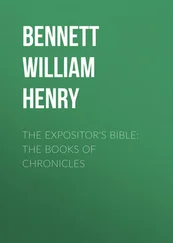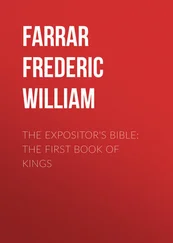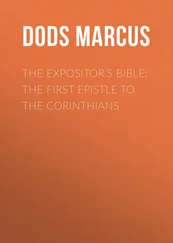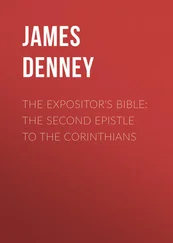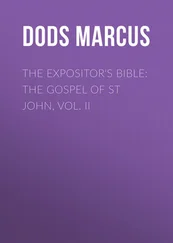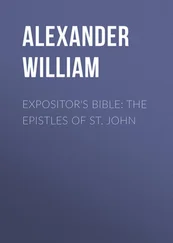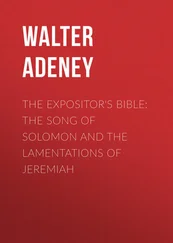John Gibson - Expositor's Bible - The Gospel of Matthew
Здесь есть возможность читать онлайн «John Gibson - Expositor's Bible - The Gospel of Matthew» — ознакомительный отрывок электронной книги совершенно бесплатно, а после прочтения отрывка купить полную версию. В некоторых случаях можно слушать аудио, скачать через торрент в формате fb2 и присутствует краткое содержание. Издательство: Иностранный паблик, Жанр: foreign_religion, foreign_antique, foreign_prose, на английском языке. Описание произведения, (предисловие) а так же отзывы посетителей доступны на портале библиотеки ЛибКат.
- Название:Expositor's Bible: The Gospel of Matthew
- Автор:
- Издательство:Иностранный паблик
- Жанр:
- Год:неизвестен
- ISBN:нет данных
- Рейтинг книги:5 / 5. Голосов: 1
-
Избранное:Добавить в избранное
- Отзывы:
-
Ваша оценка:
- 100
- 1
- 2
- 3
- 4
- 5
Expositor's Bible: The Gospel of Matthew: краткое содержание, описание и аннотация
Предлагаем к чтению аннотацию, описание, краткое содержание или предисловие (зависит от того, что написал сам автор книги «Expositor's Bible: The Gospel of Matthew»). Если вы не нашли необходимую информацию о книге — напишите в комментариях, мы постараемся отыскать её.
Expositor's Bible: The Gospel of Matthew — читать онлайн ознакомительный отрывок
Ниже представлен текст книги, разбитый по страницам. Система сохранения места последней прочитанной страницы, позволяет с удобством читать онлайн бесплатно книгу «Expositor's Bible: The Gospel of Matthew», без необходимости каждый раз заново искать на чём Вы остановились. Поставьте закладку, и сможете в любой момент перейти на страницу, на которой закончили чтение.
Интервал:
Закладка:
John Monro Gibson
Expositor's Bible: The Gospel of Matthew
I.
THE COMING OF THE CHRIST
THE New Testament opens appropriately with the four Gospels; for, though in their present form they are all later in date than some of the Epistles, their substance was the basis of all apostolic preaching and writing. As the Pentateuch to the Old Testament, so is the fourfold Evangel to the New.
That there should be a manifold presentation of the great facts which lie at the foundation of our faith and hope, was both to be expected and desired. The Gospel of Jesus Christ, as proclaimed by the first preachers of it, while in substance always the same, would be varied in form, and in number and variety of details, according to the individuality of the speaker, the kind of audience before him, and the special object he might have in view at the time. Before any form of presentation had been crystallized, there would therefore be an indefinite number of Gospels, each "according to" the individual preacher of "Christ and Him crucified." It is, therefore, a marvellous proof of the guidance and control of the Divine Spirit that out of these numerous oral Gospels there should emerge four, each perfect in itself, and together affording, as with the all-round completeness of sculpture, a life-like representation of the Lord Jesus Christ. It is manifestly of great advantage to have these several portraits of our Lord, permitting us to see Him from different points of view, and with varying arrangements of light and shade; all the more that, while three of them set forth in abundant variety of detail that which is more external, – the face, the features, the form, all the expression of that wondrous Life, – the fourth, appropriately called on this account "the Gospel of the heart of Jesus," unveils more especially the hidden riches of His inner Life. But, besides this, a manifold Gospel was needed, in order to meet the wants of man in the many-sidedness of his development. As the heavenly "city lieth four square," with gates on the east, and the west, and the north, and the south, to admit strangers coming from all points of the compass; so must there be in the presentation of the Gospel an open door for all mankind. How this great purpose is attained by the fourfold Gospel with which the New Testament opens can be readily shewn; and even a brief statement of it may serve a useful purpose as introductory to our study of that which is known as the First Gospel.
The inscription over the cross was in three languages: Hebrew, Latin, and Greek. These languages represented the three great civilizations which were the final outcome of ancient history – the Jewish, the Roman, the Greek. These three were not like so many nations selected at random, but stood for three leading types of humanity. The Jew was the man of the past. He could claim Moses and the prophets; he had Abraham for his father; his records went back to the Genesis of all things. He represented ancient prerogative and privilege, the conservatism of the East. The Roman was the man of the present. He was master of the world. He represented power, prowess, and victory; and while serving himself heir to the culture which came from the shores of the Egean Sea, he had combined with it the rude strength and restless activity of the barbarian and Scythian of the North. The Greek was the man of the future. He had lost his political empire, but still retained an empire in the world of thought. He represented humanity, and the ideal, and all the promise which was afterwards to be realized in the culture of the nations of the West. The Jew was the man of tradition, the Roman the man of energy, the Greek the man of thought. Turning now to the Gospels, we find the wants of each of these three types provided for in a wondrous way. St. Matthew addresses himself especially to the Jew with his Gospel of fulfilment, St. Mark to the Roman with "his brief and terse narrative of a three years' campaign," St. Luke to the Greek with that all-pervading spirit of humanity and catholicity which is so characteristic of his Evangel; while for those who have been gathered from among the Jews and Romans and Greeks – a people who are now no longer Jews or Greeks, but are "all one in Christ Jesus," prepared to receive and appreciate the deeper things of Christ – there is a fourth Gospel, issued at a later date, with characteristics specially adapted to them: the mature work of the then venerable John, the apostle of the Christian.
It is manifest that for every reason the Gospel of St. Matthew should occupy the foremost place. "To the Jew first" is the natural order, whether we consider the claims of "the fathers," or the necessity of making it clear that the new covenant was closely linked to the old. "Salvation is of the Jews;" the Christ of God, though the Saviour of the world, had been in a very special sense "the Hope of Israel," and therefore it is appropriate that He should be represented first from the standpoint of that nation. We have, accordingly, in this Gospel, a faithful setting forth of Christ as He presented Himself to the mind and heart of a devout Jew, "an Israelite indeed, in whom was no guile," rejoicing to find in Him One who fulfilled ancient prophecy and promise, realized the true ideal of the kingdom of God, and substantiated His claim to be Himself the divine Saviour-King for whom the nation and the world had waited long.
The opening words of this Gospel suggest that we are at the Genesis of the New Testament, the genesis not of the heavens and the earth, but of Him who was to make for us "new heavens and a new earth, wherein dwelleth righteousness." The Old Testament opens with the thought, "Behold I make all things;" the New Testament with that which amounts to the promise, "Behold I make all things new." It begins with the advent of "the Second Man, the Lord from Heaven." That He was indeed a "Second Man," and not merely one of the many that have sprung from the first man, will presently appear; but first it must be made clear that He is man indeed, "bone of our bone, flesh of our flesh;" and therefore the inspired historian begins with His historic genealogy. True to his object, however, he does not trace back our Lord's descent, as does St. Luke, to the first man, but contents himself with that which is especially interesting to the Jew, setting Him forth as "the son of David, the son of Abraham." There is another difference between the genealogies, of a more serious kind, which has been the occasion of much difficulty; but which also seems to find readiest explanation in the different object each Evangelist had in view. St. Luke, writing for the Gentile, is careful to give the natural descent, while St. Matthew, writing for the Jew, sets forth that line of descent – diverging from the other after the time of David – which made it clear to the Jew that He was the rightful heir to the kingdom. The object of the one is to set Him forth as the Son of Man; of the other to proclaim Him King of Israel.
St. Matthew gives the genealogy in three great epochs or stages, which, veiled in the Authorized Version by the verse division, are clearly exhibited to the eye in the paragraphs of the Revised Version, and which are summed up and made emphatic at the close of the genealogical tree (ver. 17). The first is from Abraham to David; the second from David to the captivity in Babylon; the third from the captivity to Christ. If we glance at these, we shall find that they represent three great stages in the development of the Old Testament promises which find their fulfilment in the Messiah.
"To Abraham and to his seed were the promises made." As given to Abraham himself, the promise ran thus: "In thy seed shall all the nations of the earth be blessed." As made to David, it indicated that the blessing to the nations should come through a king of his line. These were the two great promises to Israel. There were many others; but these stand out from the rest as constituting the mission and the hope of Israel. Now, after long waiting, both are to be fulfilled in Christ. He is the chosen Seed in Whom all nations shall be blessed. He is the Son of David, who is to sit upon His throne for ever, and reign, not over Israel alone, but over men, as "Prince of Peace" and "King of Glory." But what has the captivity in Babylon to do with it? Very much; as a little reflection will show.
Читать дальшеИнтервал:
Закладка:
Похожие книги на «Expositor's Bible: The Gospel of Matthew»
Представляем Вашему вниманию похожие книги на «Expositor's Bible: The Gospel of Matthew» списком для выбора. Мы отобрали схожую по названию и смыслу литературу в надежде предоставить читателям больше вариантов отыскать новые, интересные, ещё непрочитанные произведения.
Обсуждение, отзывы о книге «Expositor's Bible: The Gospel of Matthew» и просто собственные мнения читателей. Оставьте ваши комментарии, напишите, что Вы думаете о произведении, его смысле или главных героях. Укажите что конкретно понравилось, а что нет, и почему Вы так считаете.


